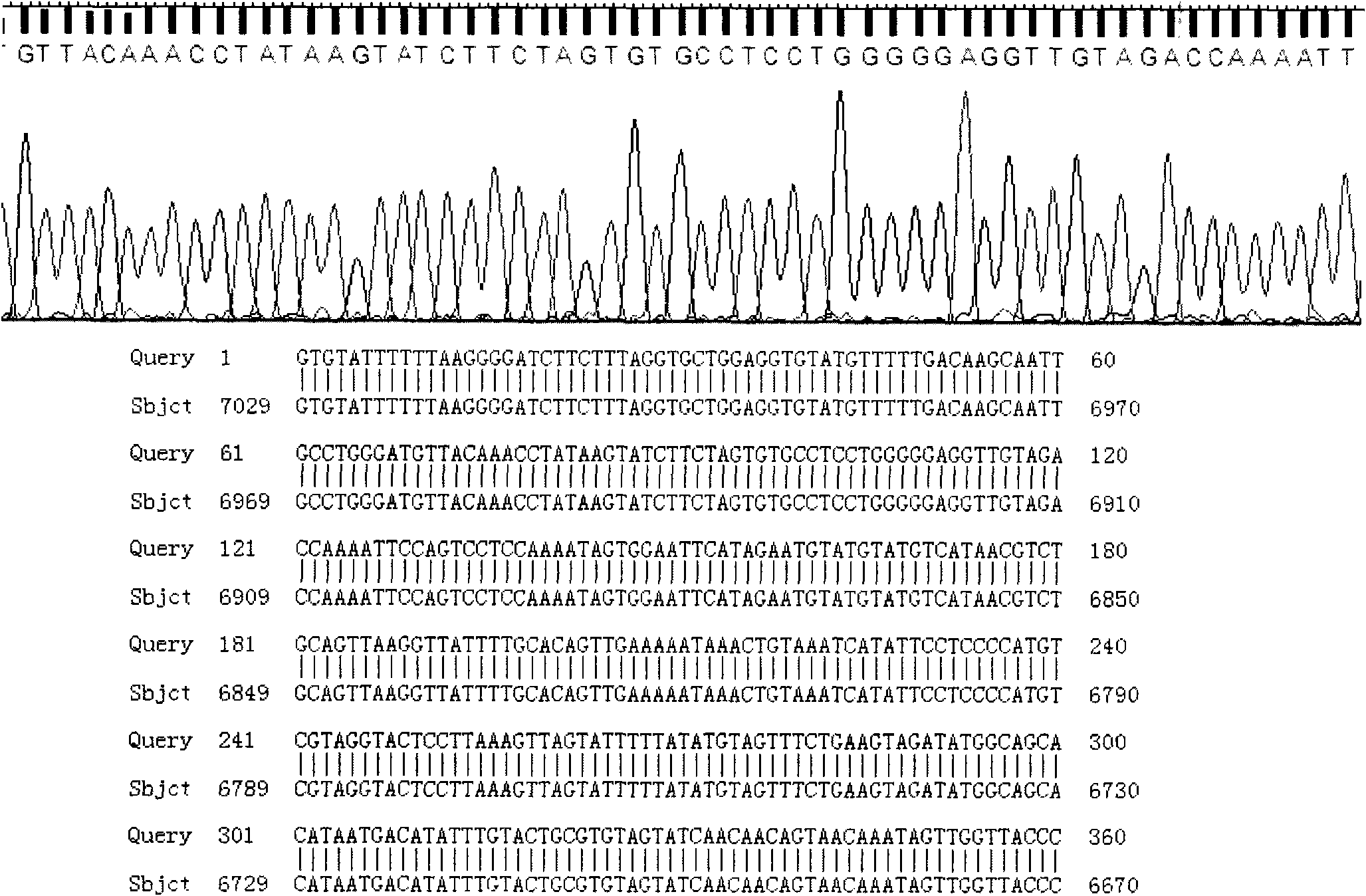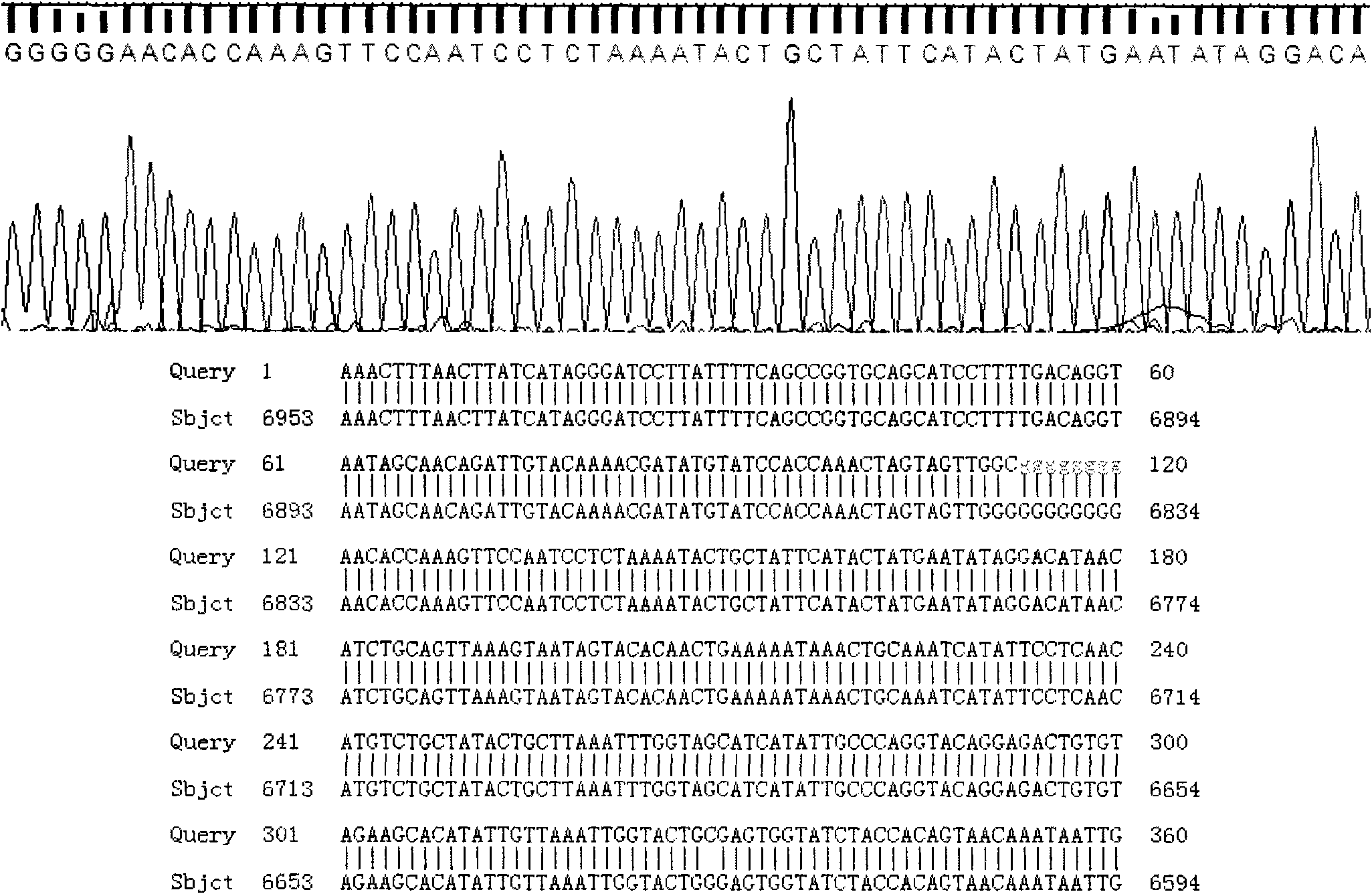Reagent for detecting human papillomavirus
A human papillomavirus and reagent technology, which is applied in the determination/inspection of microorganisms, DNA/RNA fragments, recombinant DNA technology, etc., can solve the problems of unrealistic large-scale application and high experimental technical requirements, and achieves low cost and detection sensitivity. High and accurate effect
- Summary
- Abstract
- Description
- Claims
- Application Information
AI Technical Summary
Problems solved by technology
Method used
Image
Examples
Embodiment 1
[0055] Embodiment 1, the design of primer composition A and primer composition B
[0056] 1. Primer Composition A
[0057] More than 100 types of HPV have been found, and there are about 10% base differences in the sequence between different types. Since the HPVL1 gene sequence is relatively conservative, universal primers can be designed for regions with good consistency to amplify multiple subtypes at the same time. Primer composition A consists of 19 primers listed in Table 1, and each primer is individually packaged. The DNA shown in sequence 1 to sequence 5 is a forward universal primer; the DNA shown in sequence 6 to sequence 18 is a reverse universal primer. The DNA shown in Sequence 19 is a universal primer for sequencing.
[0058] The nucleotide sequence of each primer in the primer composition A of table 1
[0059]
[0060] 2. Primer composition B
[0061] Based on the guiding significance of high-risk HPV infection for clinical diagnosis, 12 pairs of specifi...
Embodiment 2
[0065] Embodiment 2, preparation for detecting the reagent of human papillomavirus
[0066] The reagents for detecting human papillomavirus consist of primer composition A, primer composition B and quality control primer pair designed in Example 1. The quality control primer pair is used to amplify the β-globin gene (housekeeping gene), which consists of the DNA shown in sequence 44 and the DNA shown in sequence 45. Sequence 44 (beta globin forward primer): 5'-CAACTTCATCCACGTTCACC-3'; Sequence 45 (beta globin reverse primer): 5'-GAAGAGCCAAGGACAGGTAC-3'.
Embodiment 3
[0067] The application of the reagent prepared by embodiment 3, embodiment 2
[0068] One. The reagent prepared in Example 2 is used to detect human papillomavirus in the sample to be tested
[0069] The reagents prepared in Example 2 were used to detect the TCT samples (cervical slices of patients with informed consent) of 18 informed consent patients respectively, and the specific steps were as follows:
[0070] 1. Preparation of DNA template
[0071] ①Take 1ml clinical sample and add it to 1.5ml Eppendorf, centrifuge at 8000rpm for 1min, and discard the supernatant.
[0072] ② Add cell eluent (containing 137mM NaCl, 2.7mM KCl, 10mM NaCl 2 HPO 4 , 2mM KH 2 PO 4 Phosphate buffer solution, pH=7.4) shake evenly, centrifuge at 8000rpm for 1min, and discard the supernatant.
[0073] ③ Add 100 μl of DNA extraction solution (10 mM Tris-HCl solution, pH=7.4), freeze at -80°C for 4-5 hours.
[0074] ④ Place the centrifuge tube in boiling water and boil for 10 minutes.
[0075...
PUM
 Login to View More
Login to View More Abstract
Description
Claims
Application Information
 Login to View More
Login to View More - R&D
- Intellectual Property
- Life Sciences
- Materials
- Tech Scout
- Unparalleled Data Quality
- Higher Quality Content
- 60% Fewer Hallucinations
Browse by: Latest US Patents, China's latest patents, Technical Efficacy Thesaurus, Application Domain, Technology Topic, Popular Technical Reports.
© 2025 PatSnap. All rights reserved.Legal|Privacy policy|Modern Slavery Act Transparency Statement|Sitemap|About US| Contact US: help@patsnap.com



